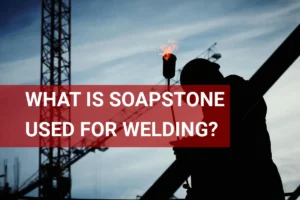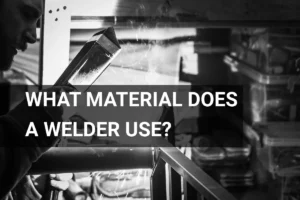How to Clean a Welding Helmet Lens? Simple Steps & Tips for Clear Vision
Published on: November 18, 2024 | Last modified: March 4, 2025
By: Mark Carter
A helmet lens is the part of your welding helmet that protects your eyes from harmful light and sparks. It’s crucial for keeping your vision safe while you weld.
One question I get asked a lot is, how to clean a welding helmet lens? Keeping your lens clear is key for your safety and your work quality. I’ve seen way too many welders struggle through a project with a dirty lens, and it just makes things harder.
In this guide, I’ll cover essential tips on how to clean a welding helmet lens, types of helmet lenses, steps for cleaning, factors affecting cleaning, and frequently asked questions. You’re gonna learn everything you need to keep your lens crystal clear, plus how to prevent fogging, so have a look!
Contents
How to Clean A Welding Helmet Lens?
The helmet lens protects your eyes during welding. To clean a welding helmet lens, use a soft cloth and soapy water, avoiding harsh chemicals. It’s easy, typically taking just a few minutes for regular maintenance—essential for clear vision.
What is a Welding Helmet Lens?
A welding helmet lens is a vital part of welding safety gear. It protects your eyes from harmful UV and IR (Infrared) radiation produced during welding. These lenses are usually rated in shade numbers, from shade 9 (Light Welding) to shade 13 (Heavy-duty Tasks). For example, shade 10 filters over 97% of harmful light, ensuring worker safety.
Cleaning a welding helmet lens is crucial for clear visibility and safety. To maintain optimal performance, use gentle, non-abrasive solutions. I prefer a microfiber cloth with water, as it won’t scratch the lens. Regular cleaning helps prevent visibility issues during work.
Friends have shared how they improved clarity by switching to a cleaner lens. They noticed a significant difference after learning effective cleaning techniques for welding helmet lenses. Keeping the lens clean not only enhances performance but also reduces eye strain and discomfort while welding.
Types Of Welding Helmet Lenses
Let’s explore different helmet lenses and how to keep them in top shape.
-
Standard Clear Lenses
Standard clear lenses provide a basic view while welding. To keep them spotless, use a soft cloth with lens cleaner. Gently wipe in circular motions to avoid scratches.
-
Dark Shade Lenses
Dark shade lenses protect your eyes from bright light during welding. For cleaning, use warm soapy water and a soft cloth. Rinse thoroughly and dry to avoid water spots.
-
Auto-darkening Lenses
Auto-darkening lenses adapt to light levels automatically. To clean them, avoid solvents that can damage the sensors. Instead, wipe with a damp microfiber cloth for clarity.
-
Mirror Finish Lenses
Mirror finish lenses reflect light and prevent glare. To maintain them, use gentle lens cleaners and a soft cloth. Avoid harsh chemicals to protect the reflective coating.
-
Safety Rated Lenses
Safety rated lenses meet industry standards for protection. Clean these with a non-abrasive cleaner and a clean towel to keep them scratch-free and clear.

Steps for Cleaning a Welding Helmet Lens
Here are the steps to effectively clean a welding helmet lens.
-
Gather Necessary Supplies
Start by gathering your supplies: a microfiber cloth, clean water, and mild soap. I prefer distilled water to avoid mineral deposits. Harsh chemicals can damage the coating on auto-darkening lenses, so stick to mild options.
Maintaining the quality of your welding tools extends their lifespan, and understanding how to properly store welding rods is essential.
Avoid paper towels; they can scratch the lens. In a pinch, I’ve used vinegar mixed with water, but be cautious and test it first.
-
Remove the Lens From the Helmet
If your helmet permits easy lens removal, take it out gently. Follow the user manual for specific instructions. Some lenses snap in while others use screws—understanding this prevents damage.
In my experience, forcing a lens out can lead to cracks. Handle it carefully and lay it flat on a soft surface to avoid scratches during cleaning.
-
Use a Soft Cloth or Sponge
Grab a microfiber cloth or a clean sponge. These materials are soft and won’t scratch your lens. Never use rough materials; a fine scratch can ruin visibility!
I once made the mistake of using a rough cloth, which left my lens pitted. Always test cleaning materials on a small area first if you’re unsure.
-
Apply Appropriate Cleaning Solution
Mix a gentle soap solution with water—about 5 mL to 500 mL (1 Tsp to 2 Cups) is sufficient. Dip your cloth or sponge into the solution; ensure it’s damp, not soaking wet. Excess moisture can seep into helmet components.
Stick to mild products. For a quick clean, plain water often works well, depending on the level of grime on your lens.
-
Wipe the Lens Gently
Start wiping the lens in circular motions. Be gentle, especially around fragile edges. Focus on areas with accumulated smoke or dust for the best results.
From my experience, consistency is key when tackling tough spots. Don’t scrub too hard; clean without damaging the surface.
-
Reassemble the Helmet
Once the lens is clean and dry, carefully reinsert it into the helmet. Ensure it’s fitted correctly. A loose lens while welding is unsafe!
After reassembly, check that all components are snug before using the helmet again. I’ve overlooked this before, leading to annoying distractions in the field.

Factors Influencing the Cleaning Of a Welding Helmet Lens
What factors affect the cleaning process of your welding helmet lens?
-
Type Of Lens Material
The lens material determines how to clean it. Plastic lenses scratch easily, impairing visibility.
-
Frequency Of Use
More helmet use means more dirt. Regular cleaning keeps your lens in good condition.
-
Type Of Welding Process
Different welding processes create varying amounts of spatter and smoke. I once used a dirty helmet during TIG (Tungsten Inert Gas) welding, resulting in poor visibility.
-
Environmental Conditions
Humidity and temperature can cause lens fogging. A wet environment also makes contaminants stick faster.
-
Presence Of Contaminants
Dirt, oil, and flux can cling to the lens. A thorough clean is essential for clear visibility while welding.
Frequently Asked Questions (FAQs)
Now let us look at some unique questions I typically get asked.
Why Does My Welding Helmet Stay Dark?
Yes, your welding helmet may stay dark due to the auto-darkening filter failing. These filters use a liquid crystal display (LCD) that can malfunction. If this happens, it often means you need to replace the lens, which can cost between $30 to $100, depending on the model. Additionally, it’s important to check the batteries or solar panel if your helmet relies on them, as depleted power sources can also cause the lens to stay dark unexpectedly. Regular maintenance can help prevent such issues and extend the lifespan of auto darkening welding helmets. By keeping the helmet clean and storing it properly, you can ensure it remains reliable for future welding tasks.
How Often Should I Change My Welding Lens?
You should change your welding lens at least every 6 to 12 months. Frequent lens changes can help ensure optimal visibility, safety, and performance during your welding tasks. A worn lens can reduce light transmission by up to 50%, affecting your ability to see clearly. Choosing the right welding equipment is crucial for achieving optimal results and understanding what kind of welder do I need can greatly improve your welding experience.
How to Keep Welding Lenses Clean?
To keep welding lenses clean, regularly inspect them for dirt and spatter. Use a microfiber cloth and a gentle, non-abrasive cleaner designed for lenses. Cleaning maintains visibility and prevents damage, extending the lifespan of your lens. For a comprehensive understanding of such equipment, explore wiring a Lincoln 225 welder.
How to Keep a Welding Helmet From Fogging?
You can keep a welding helmet from fogging by using an anti-fog solution on the lens. Installing a defogging fan can also help circulate air and maintain clear visibility. This is especially useful in humid conditions where fogging can occur frequently. If you’re starting out, it might be helpful to explore good welder options for beginners to ensure you have the right equipment.
How to Clean the Lens on a Welding Helmet?
To clean the lens on a welding helmet, use a soft cloth with mild soap and water. Avoid harsh chemicals that can damage the lens coating. A clean lens is vital for safety and performance, helping you to see your work without distractions. Understanding the specific power needs of welding tasks can further enhance your welding experience, such as knowing the correct amps for a 3/32 rod.
Conclusion
We covered several key items on how to clean a welding helmet lens. This included types of helmet lenses, steps for cleaning, factors influencing cleanliness, and FAQs. Each detail plays a vital role in maintaining your helmet for optimal visibility.
Happy cleaning comes down to using the right approach. To clean a welding helmet lens, remember to wipe with a soft cloth and use proper cleaning solutions, like isopropyl alcohol (90% or Higher). It’s straightforward: make it a habit to keep your lenses clean, and you’ll improve safety and visibility every time you weld.
For more insights and the latest articles on welding, return to our homepage at What is Welding.
References
- ISO. (2017). ISO 3834: Quality Requirements for Fusion Welding of Metallic Materials. Geneva, Switzerland: ISO.
- Weisman, J. (2011). Practical Welding Technology. Boca Raton, FL: CRC Press.
- Jeffus, L. (2020). Welding: Principles and Applications (9th ed.). Boston, MA: Cengage Learning.
Mark is a skilled welding engineer specializing in advanced metal joining technologies and process design. With a formal education in welding engineering and a background rooted in practical experience, Mark bridges the gap between theory and application. He is passionate about making technical concepts accessible, empowering welders to embrace innovation while mastering essential skills. Mark combines his scientific expertise with a commitment to supporting the welding community alongside his uncle, Joe.
Art, Clear Vision, Lens Cleaning, Maintenance Tips, Safety, Visibility, Welding, Welding Equipment, Welding Helmet, Welding Safety







